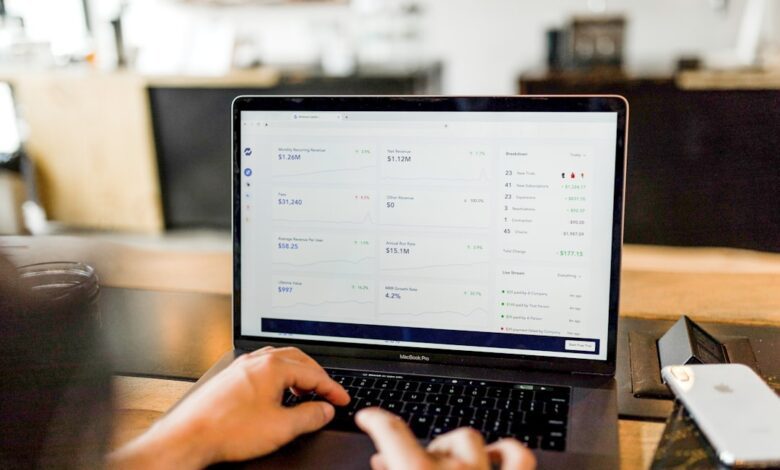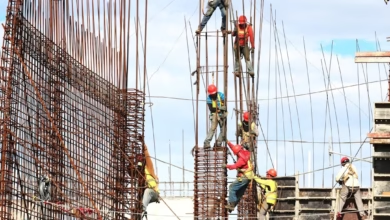Metals in Motion: Exploring Industrial Demand and Investment Trends in Today’s Economy

In an increasingly interconnected global economy, the dynamics of metals markets are more critical than ever, influencing both industrial innovation and investment strategies. This article delves into the multifaceted roles that various metals play, from silver's unique position as both an industrial workhorse and a sought-after investment asset, to copper's role as a barometer for global economic health. We will explore the burgeoning demand for rare earth metals in the context of green energy technologies, weigh the investment merits of platinum versus palladium, and examine how inflationary pressures shape the prices of both precious and industrial metals. Additionally, we will consider the future of aluminum in a sustainable economy and the implications of mining regulations on metal prices. By understanding these interwoven themes, investors and industry stakeholders can better navigate the complexities of metal markets and make informed decisions in a rapidly evolving landscape.
- 1. "Silver's Dual Role: Bridging Industrial Applications and Investment Opportunities"
- 2. "Copper Prices as Economic Barometers: Analyzing Global Trends and Impacts"
- 3. "Navigating the Green Revolution: The Surge in Demand for Rare Earth Metals"
1. "Silver's Dual Role: Bridging Industrial Applications and Investment Opportunities"
Silver plays a unique and multifaceted role in both industrial applications and investment markets, making it a crucial metal in today's economy. On the industrial side, silver is valued for its exceptional conductivity, thermal properties, and resistance to corrosion. It is widely used in electronics, solar panels, medical devices, and various chemical processes. The growing demand for green technologies, such as solar energy systems, has further bolstered silver’s industrial appeal, as these applications require significant amounts of the metal.
In contrast, silver also serves as a popular investment asset, often viewed as a safe haven during times of economic uncertainty. Investors turn to silver as a hedge against inflation and currency fluctuations, similar to gold. Its relatively lower price compared to gold makes it accessible to a broader range of investors, contributing to its popularity in both physical forms, such as coins and bars, and in financial instruments like ETFs and futures.
The dual role of silver creates a dynamic interplay between its industrial demand and investment potential. For instance, when industrial demand surges—driven by technological advancements or infrastructure development—this can lead to increased prices, attracting more investors. Conversely, during economic downturns, heightened interest in safe-haven assets can drive silver prices up, even as industrial demand may decline.
Overall, silver's ability to bridge the gap between industrial utility and investment opportunity positions it as a significant player in the metals market, influencing pricing dynamics and investment strategies in various economic contexts. As industries evolve and the global economy fluctuates, silver’s dual role will continue to shape its market trajectory and appeal to both consumers and investors alike.
2. "Copper Prices as Economic Barometers: Analyzing Global Trends and Impacts"
Copper prices are often viewed as vital indicators of global economic health, earning the nickname "Dr. Copper" due to its extensive use in various industries. The metal is a key component in electrical wiring, plumbing, and construction, making its demand closely tied to economic activity. When economies are growing, infrastructure projects and manufacturing ramp up, leading to increased copper consumption. Conversely, during economic downturns, demand typically decreases, causing prices to drop.
Recent trends have shown that fluctuations in copper prices can reflect broader economic conditions. For instance, a surge in prices often signals optimism about industrial growth, as seen during periods of robust global recovery following recessions. Conversely, falling copper prices may indicate a slowdown, as seen during trade tensions or global crises, such as the COVID-19 pandemic, which significantly affected supply chains and industrial output.
Additionally, copper prices can be influenced by speculative trading in commodity markets, where traders react to perceived economic indicators rather than actual demand. This speculation can exacerbate price volatility, leading to sharp increases or decreases that may not align with underlying economic fundamentals.
Furthermore, geopolitical factors play a significant role in copper pricing. Major producing countries, such as Chile and Peru, can impact global supply through changes in mining regulations, labor strikes, or political instability. Such events can disrupt the market and lead to price spikes that reflect not only supply concerns but also investor sentiment about future economic conditions.
In summary, copper prices serve as a barometer for global economic health, influenced by demand from various sectors, speculative trading, and geopolitical dynamics. Monitoring these prices provides valuable insights into the overall state of the economy and potential future trends.
3. "Navigating the Green Revolution: The Surge in Demand for Rare Earth Metals"
The transition to green energy technologies has significantly increased the demand for rare earth metals, essential components in various applications such as electric vehicles (EVs), wind turbines, and energy-efficient lighting. As the world shifts towards renewable energy sources and aims to reduce carbon emissions, the reliance on these metals becomes more pronounced.
Rare earth metals, including neodymium, dysprosium, and lithium, play a crucial role in the production of high-performance magnets, batteries, and catalysts. For instance, neodymium is vital for manufacturing the strong permanent magnets used in EV motors, while lithium is a key ingredient in rechargeable batteries. As automakers and energy companies ramp up production to meet ambitious sustainability targets, the demand for these metals is expected to rise sharply.
Moreover, the geopolitical landscape surrounding rare earth metals adds another layer of complexity. A significant portion of the global supply is concentrated in a few countries, particularly China, which controls a substantial share of production and processing capabilities. This concentration raises concerns about supply chain vulnerabilities and potential trade restrictions, prompting countries to explore domestic sourcing and recycling initiatives to secure a stable supply.
The surge in demand for rare earth metals is not without challenges. Environmental concerns related to mining practices, which can be damaging to ecosystems, have led to calls for more sustainable extraction methods. As the green revolution progresses, finding a balance between meeting the increasing demand for rare earth metals and ensuring environmentally responsible practices will be critical.
In summary, the rise of green energy technologies is driving a transformative shift in the market for rare earth metals, presenting both opportunities and challenges for investors and industries alike. The successful navigation of this evolving landscape will depend on innovation, sustainable practices, and strategic planning.
In conclusion, the metals market serves as a complex and dynamic landscape influenced by various factors, from industrial demand to investment strategies. Silver, with its unique position straddling both industrial applications and investment potential, exemplifies how these markets can intertwine. Similarly, copper prices act as vital indicators of global economic health, reflecting trends that are essential for investors and policymakers alike. The increasing focus on green energy technologies has amplified the demand for rare earth metals, signaling a pivotal shift towards sustainable practices that could reshape the industry.
When it comes to precious metals like platinum and palladium, understanding their distinct characteristics and market behaviors is crucial for making informed investment decisions. Furthermore, the role of metals in diversifying investment portfolios cannot be overstated, especially in an era where inflation continues to impact prices across the board. As we look to the future, aluminum emerges as a key player in a sustainable economy, driven by its versatility and recyclability.
Finally, the regulatory landscape surrounding mining significantly affects metal prices, highlighting the intricate connection between policy, environmental considerations, and market dynamics. As we navigate these complexities, it is clear that a comprehensive understanding of these elements is essential for anyone looking to engage with the metals market, whether for industrial applications or investment opportunities. Embracing this knowledge will empower investors and industry stakeholders to make strategic decisions that align with both economic trends and sustainability goals.





